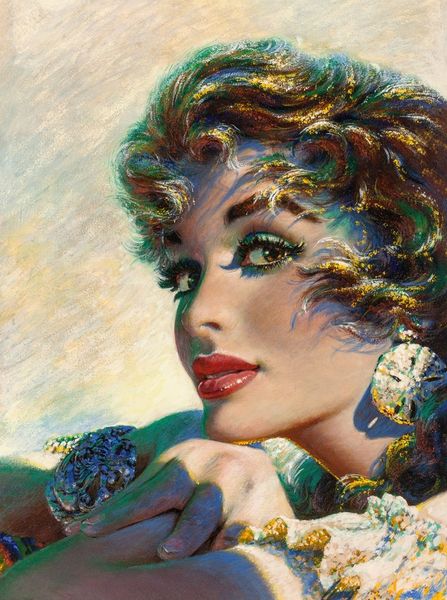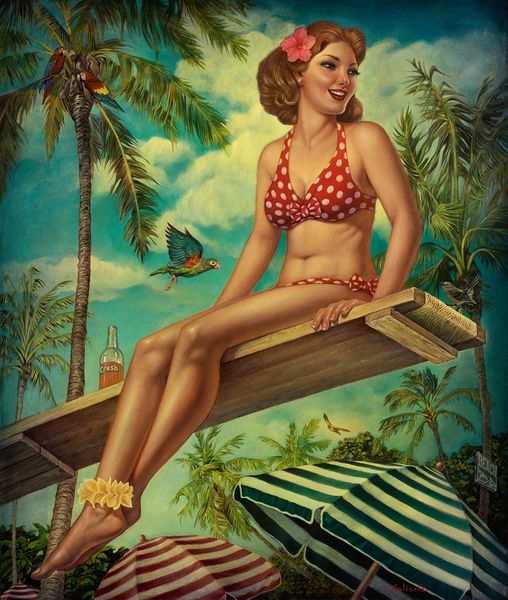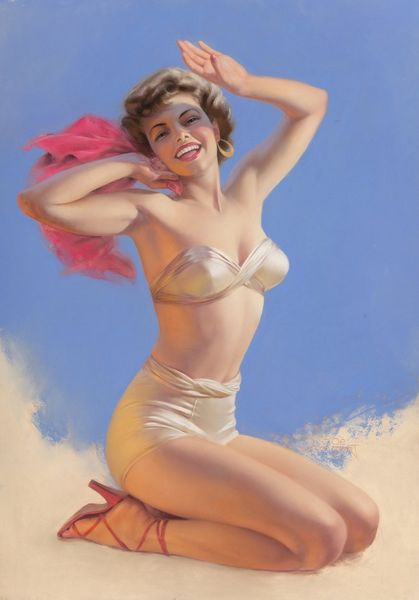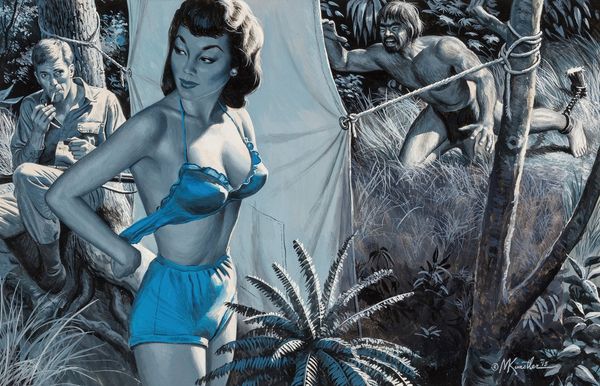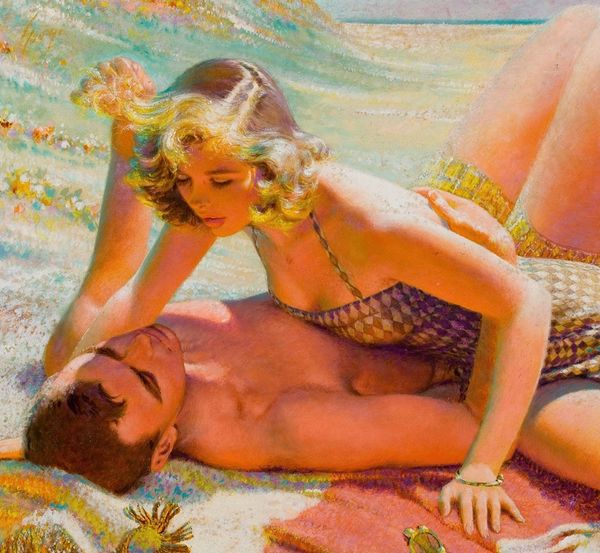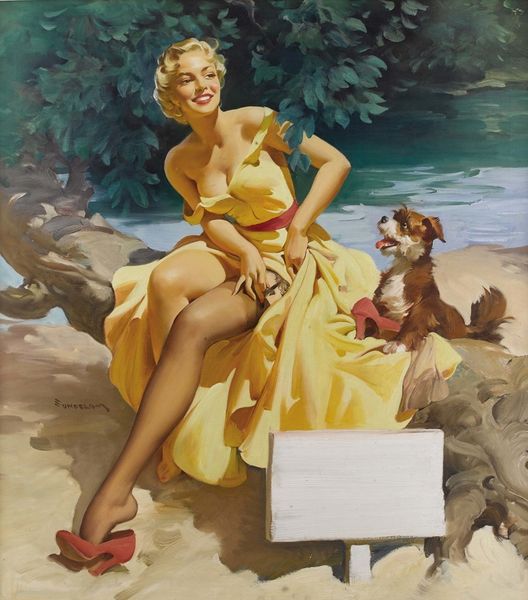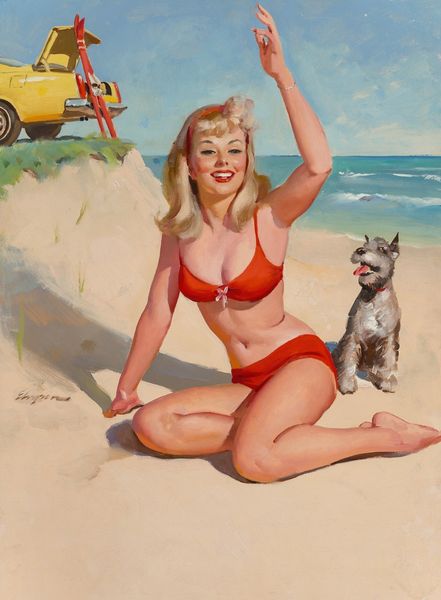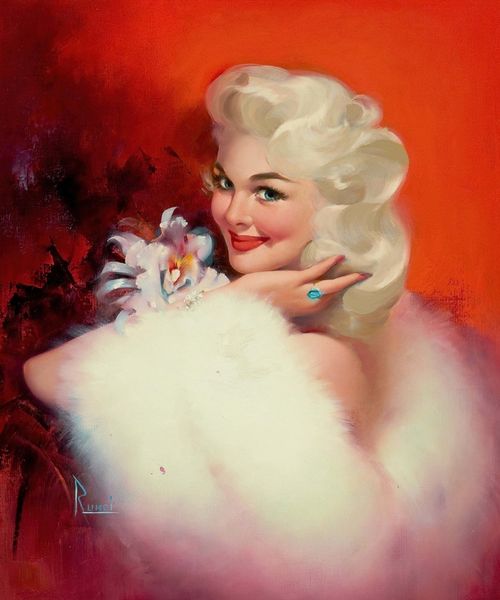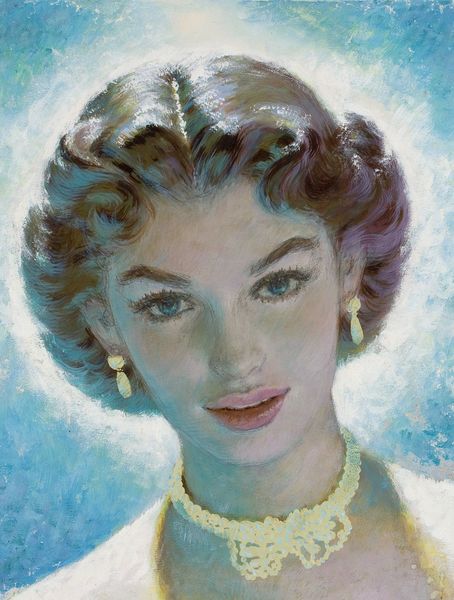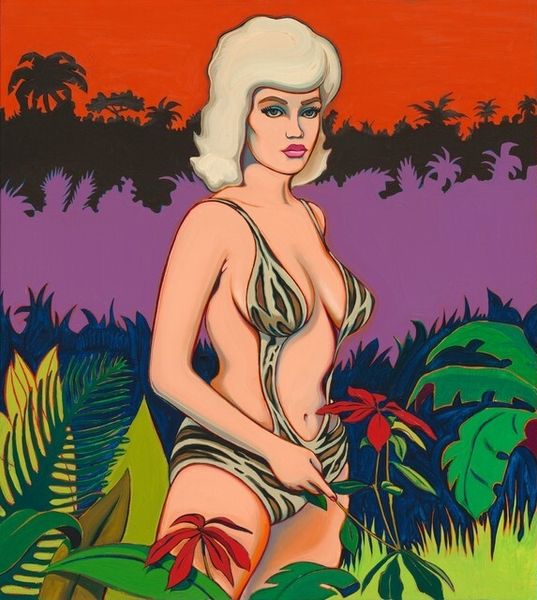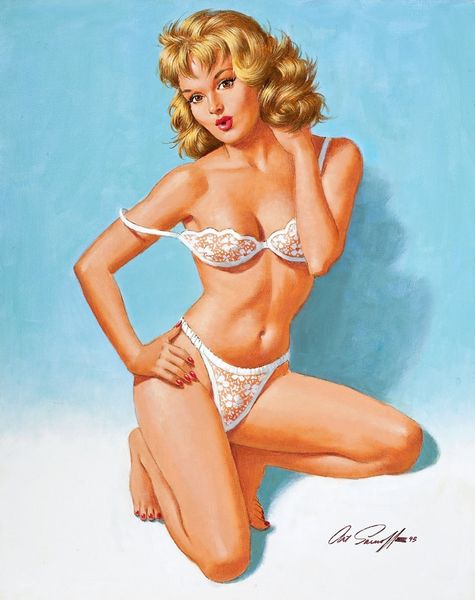
painting, oil-paint
#
portrait
#
figurative
#
painting
#
oil-paint
#
oil painting
#
genre-painting
#
portrait art
#
realism
Copyright: Modern Artists: Artvee
Editor: So, we’re looking at "In the Shade," an oil painting by Edwin Georgi. The bright, cheerful face juxtaposed with the sharp shadows from the fronds makes it quite striking! What do you see in this piece, from your perspective? Curator: The imagery of idealized feminine beauty, rendered with techniques that echo commercial illustration, makes me think about the complex role images like these played in shaping societal expectations, especially for women. How was beauty represented and what purposes did it serve? Editor: That's interesting. I hadn’t thought of it like that. It feels very "vintage ad" somehow, that sunny optimism. Did the culture of advertising influence painting like this at the time? Curator: Absolutely. The lines between fine art and commercial art became increasingly blurred in the mid-20th century. Artists often drew inspiration from advertising’s vibrant colors and aspirational messaging. The popularity of pin-up art also helped elevate the genre. What do you think the artist might be saying about the experience of women with this kind of portrayal? Editor: Hmm, it's difficult to tell. On one hand, it's just a woman smiling. But placed in a commercial context, perhaps it underscores the objectification of women that was happening more openly. Maybe it hints at how women were seen to "advertise" happiness? Curator: Exactly! The bright smile could be seen as a mask, constructed by social pressures. Exploring art means uncovering these layers of cultural meaning. We can look closer into how that was happening historically. Editor: This definitely makes me consider these cheerful images with a lot more critical awareness of its underlying impact! Curator: And that’s the key takeaway - recognizing how art can reflect, reinforce, or even challenge dominant cultural values of its time.
Comments
No comments
Be the first to comment and join the conversation on the ultimate creative platform.
